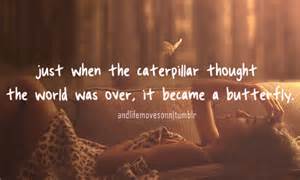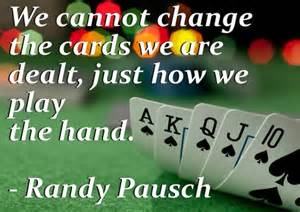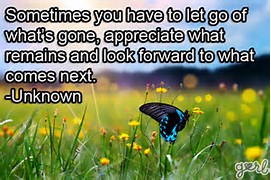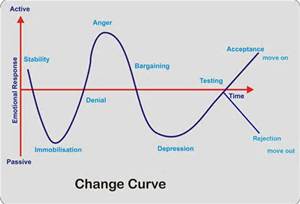
My second year of teaching was spent in a middle school classroom where my students all had been labeled “educable mentally retarded.” I started mid-year, so I only had a little over five months with these 15 students and their curriculum. I had established a wonderful rapport with “my” students and was looking forward to my next year with them and with the curriculum (especially since I had a lot of creative ideas of how to enhance the curriculum). Was I in a comfort zone with my teaching? You bet.
When school finished in June, I took a couple of weeks off to rest and recharge, but by the beginning of July, I was back in my classroom getting it ready for the new school year. I had learning centers all around the room full of fun and creative ways to learn the material we’d be working on. About two weeks before school was to resume, the vice-principal informed me that my class had been changed to something called “multi-categorical,” and I would now have students labeled “educable mentally retarded, learning disabled, and emotionally disturbed.”
Say what? I wasn’t quite the change agent back then that I am now. I was not looking forward to these changes to my classroom. We are going to examine why change is so hard in the context of this one example from my life. Why was I not looking forward to these changes? Why was it so hard for me to accept the change from my self-contained special education classroom to this thing called a multi-categorical classroom?
Change is hard because we develop a certain mindset about how things are to be. For me, I was anticipating my self-contained special education classroom. My classroom becoming this ‘multi-categorical thing’ created a distortion in my professional world – something was becoming different – a change was happening and this change challenged my mindset. I had a picture of what my classroom was to be; I had ‘defined’ my teaching world in terms of the population of students I expected and how my classroom was going to work. The new population of students with whom I would be working was inconsistent with I how felt my teaching world should be. A major change had entered my world and it was hard for me to accept because of my mindset.

Change is also hard because we get comfortable with our routine; with the way things have always been done. We get set in our ways. We are comfortable with pattern and routine. I was certainly prepared and ready for my self-contained classroom of ‘educable mentally retarded’ students. But, was I ready to handle such a diverse group of students all in the same class?

Change is hard because it moves us out of our comfort zone. Who doesn’t love their comfort zone? In it, we are less stressed. We know what to expect so we feel more stable, safe, and secure. Introducing students into my classroom who were learning disabled and emotionally disturbed pushed me out of my comfort zone. Thoughts of not being able to handle things in this new zone can be frequent visitors, and in my case, I certainly had a lot of questions. When we are out of our comfort zone, we tend to fear failure, another reason why change is hard.

Change is hard when we associate the loss of something with it (especially the loss of control). My classroom becoming multi-categorical meant I was losing my self-contained, somewhat homogeneous group of students. My new classroom environment meant that I would have to let go of how I did things the previous school year. A lot of what I had spent the month of July creating in the classroom would have to be redone; just thinking about the loss of time, energy, and effort invested so far was somewhat overwhelming.

Change is hard because we fear the unknown. We don’t know what is coming. We feel safe with predictability, sureness, and the routine. Change can be likened to opening a door and not having any idea of what is on the other side; we take a step into the unknown. We lose that comfortable routine, that comfort zone, and that is scary and frightening. The loss of the familiar and the shift out of our comfort zone can be frightening and downright scary. Oh, the questions that ran through my mind when I learned about having a multi-categorical classroom! Where was this all going to lead? Will I be able to handle such a diversity in learning abilities and styles? Would I be able to manage some classes with close to 30 students, all special in some way, and all presenting such different needs? The unknown can be terrifying.

Change is hard because we can switch into “bad stress” mode. Life in the changed environment can feel overwhelming. The uncertainty, new expectations, negative emotions all can take a toll on us when we go into ‘stress mode.’

Change is hard when it is thrust upon us and we have no say in what is changing. Shock mode, big time. I think this was my first reaction upon hearing the news of my changed classroom. No, this can’t be happening to me! School starts in just two weeks; are you kidding me?! This is too much to handle at one time. Oftentimes, when change is thrust upon us, we tend to begin thinking that the change wasn’t needed in the first place. Negative emotions such as fear, anger, sadness, or frustration begin to raise their head. These negative thoughts add to making change hard.

Change is hard when we feel our values and principles have been compromised. Having to do something or live with something that goes against everything you stand for can make whatever is changing rough. Having 30 special needs students in one class, without any assistance, did go against what I thought was sound and good teaching practice.

Change is all about making something different from what is. It seems that no matter how small or dramatic the change, no matter how expected or unexpected the change, it is accompanied by fear, doubt, uncertainty, and a sense of loss of control. It can be painful, uncomfortable, and difficult to change. It is human nature to want to avoid anything that is painful, makes us uncomfortable, and is difficult. Many changes move us out of our comfort zone, that zone, like a child’s security blanket, where we feel safe and secure. We would prefer comfortable, familiar, and safety. In this post, we explored 10 reasons why change is hard. In future posts, we’ll take a closer look at some of these reasons and explore how we can better deal with them.




























